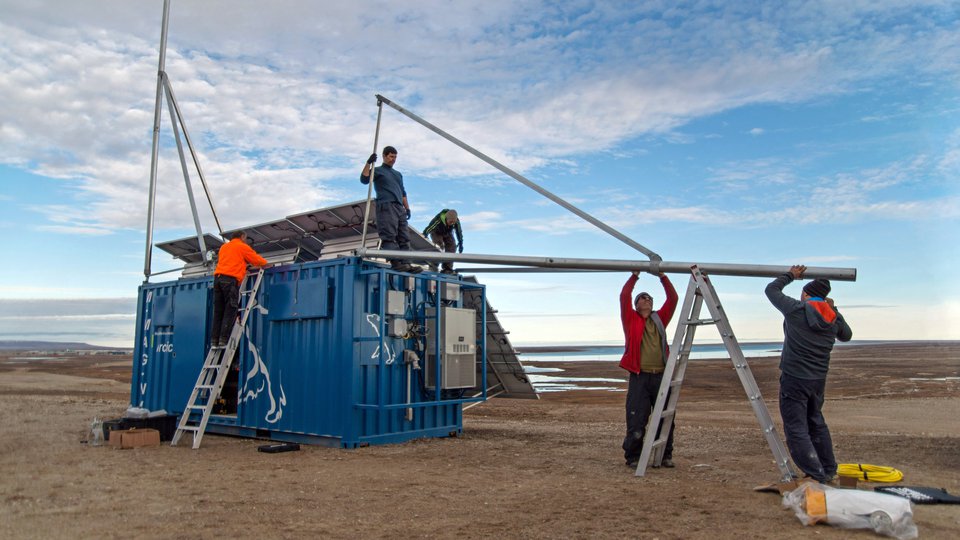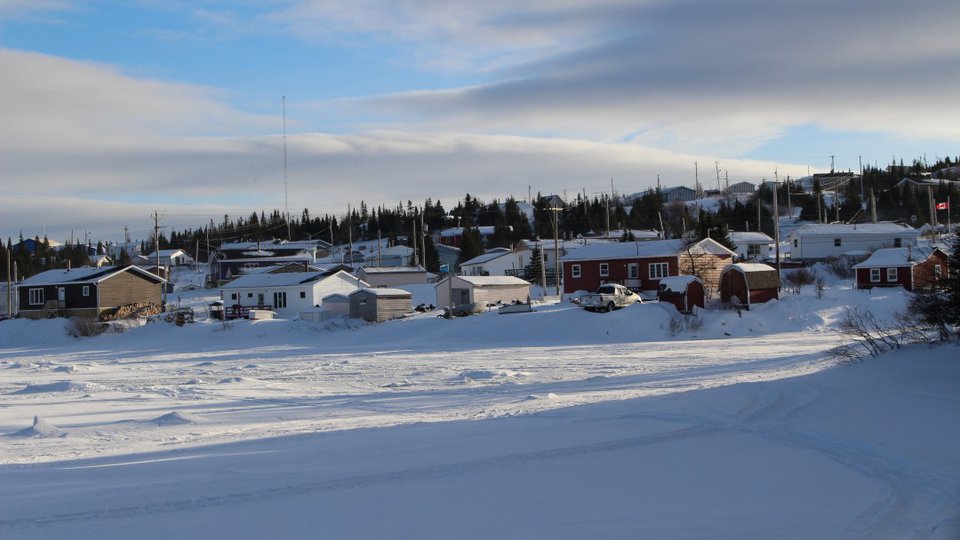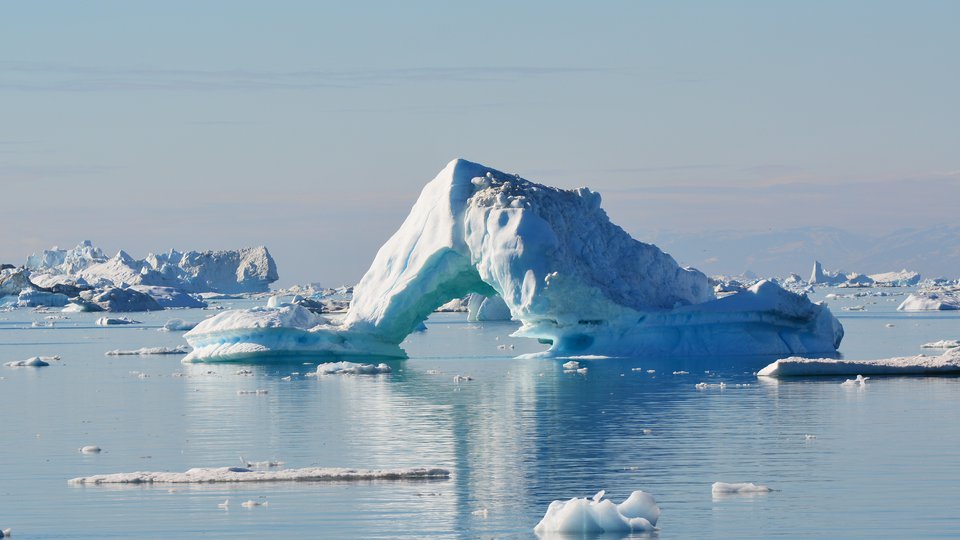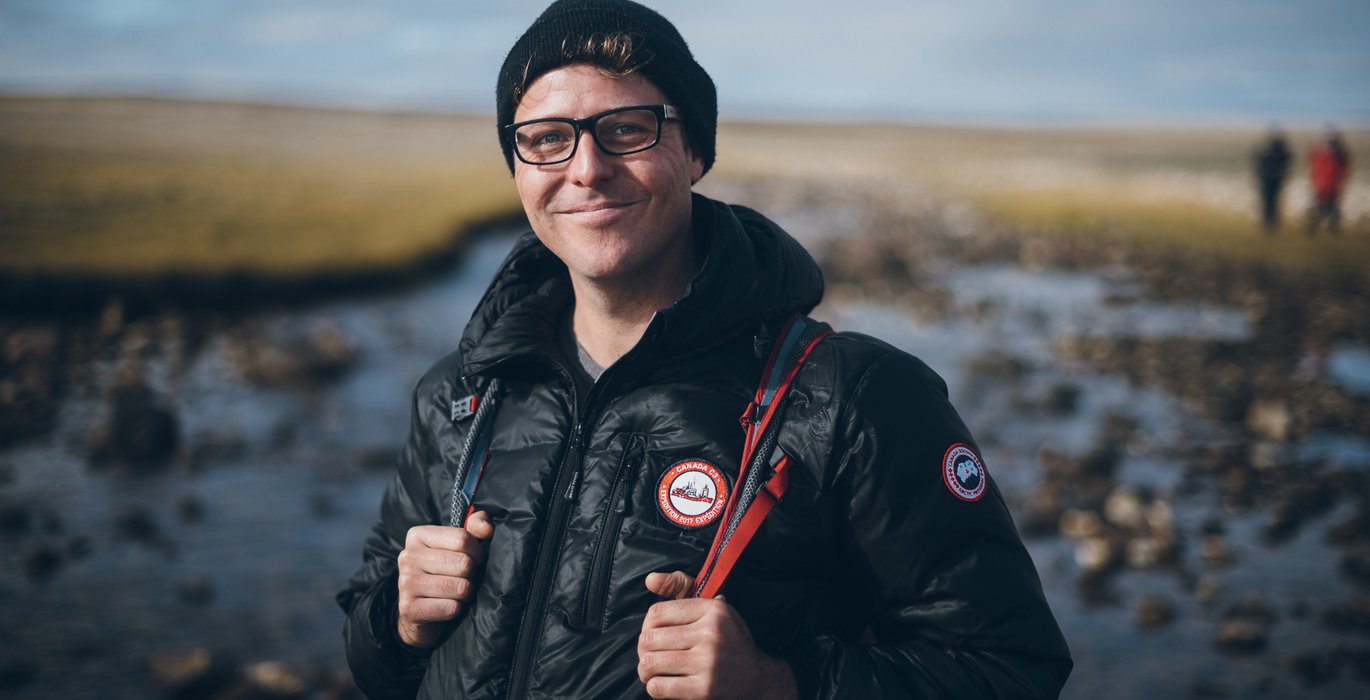
Before guests stepped off Adventure Canada’s Ocean Endeavour at remote landing sites along Nunavut’s Northwest Passage, the ship’s expedition crew inspected each site. While the team’s designated bear monitors would search for polar bears and other hazards in the area to establish a safe perimeter for guests, expedition archaeologist Brendan Griebel was scouring the sites for remnants of the past.
“There are the bear monitors usually who secure the area for the arrival of passengers coming onto land, and I would do that in an archaeological sense,” he says. “I would look at what, if any, cultural or archaeological sites were in the area, and I’d look at how they can best be mitigated so that they wouldn’t be damaged by people being around them.”
Griebel would depart the ship early each day, usually in the first small boat to shore, and he would spend time inspecting each site for Arctic artifacts and cordoning off any areas people should avoid to preserve the sites. He describes his role as ensuring “that people are engaging in proper ways with these very sensitive cultural and material histories.”
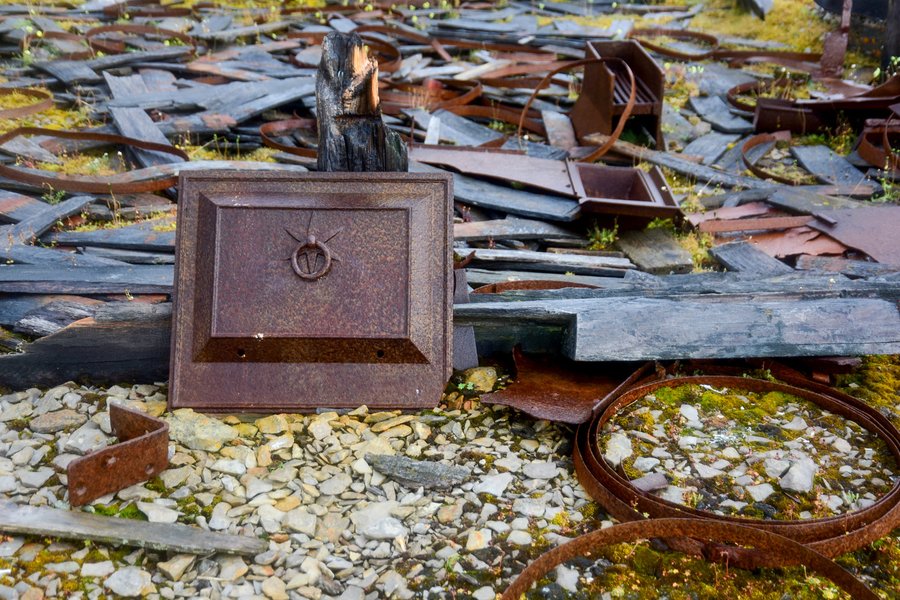
Old Arctic artifacts.
With a PhD in anthropology from the University of Toronto, Griebel’s work as an Arctic archaeologist and anthropologist primarily focuses on studying materials.
“I specialize in the study of material technologies, often what I like to term as craft work, the idea of human making,” Griebel says. “So that involves elements of both technical making, so understanding the techniques people use for transforming their environment into usable things and tools, and it also really looks at how these technologies are incorporated into culture and used to think about history, build identity, and bring communities together.”
In 2024, Griebel joined the ship for a 17-day “Out of the Northwest Passage” voyage from Kugluktuk, Nunavut, through the Northwest Passage to Greenland. As the expedition’s Canadian archaeological permit holder, his expertise was required for the ship to land at certain historical, cultural and archaeological sites. At each site, he would inspect the location and determine the best way to manage the ship’s guests, breaking up larger groups and grouping people in ways that would avoid causing damage to fragile and sensitive areas, and diverting people away from culturally sensitive areas like grave sites.
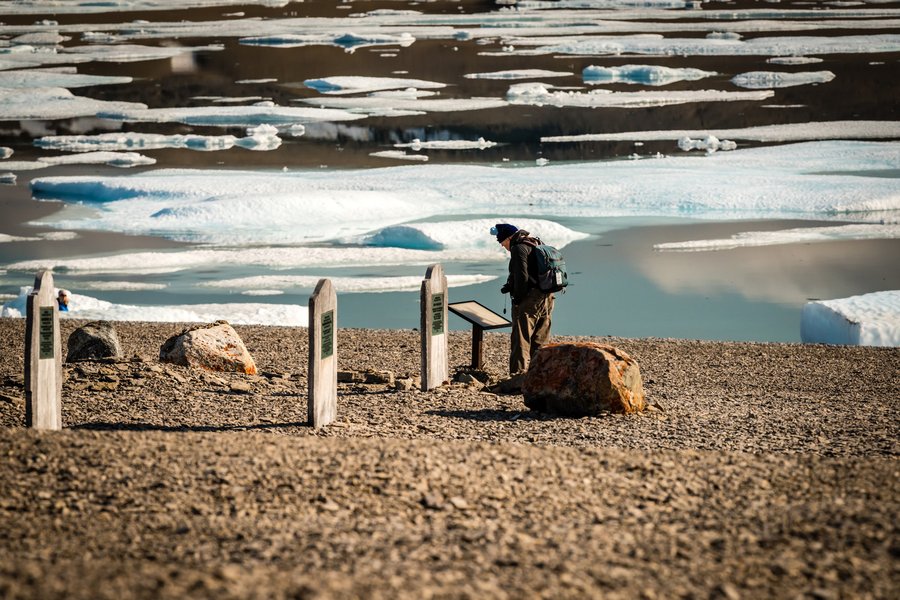
Gravesite on Beechey Island. The final resting place of crew members who perished during the winter of 1845-1846 on Sir John Franklin’s expedition in search of the Northwest Passage.
Griebel’s role during the Out of the Northwest Passage voyage focused on the Canadian archaeological sites, with the responsibilities shifting to Inuit cultural educators from Greenland when the ship moved into Greenlandic territory, with Griebel supporting their work.
When he’s not scouting remote Arctic historical sites, Griebel spends much of his time in Cambridge Bay (Iqaluktuuttiaq), where he manages collections and archives at Pitquhirnikkut Ilihautiniq / Kitikmeot Heritage Society, where he has been an employee for almost 20 years. His role there involves working with community members to document Inuit knowledge about cultural objects, including how they are made and used. He says they work to examine previously used technologies and incorporate them into contemporary knowledge. Part of this effort involves working with the material samples they find in archaeological sites and museums around the world.
They document and measure them, look at pieces with elders, and find writings in archives whenever possible.
“We’ll triangulate that with the large amount of knowledge that’s still in these communities, traditional knowledge, and we’ll use all of these sources to piece this technology back together and layer it with language and layer it with intergenerational learning,” he says. “The terminology used up there is ‘reawakening the object.’ This knowledge isn’t gone—it’s just kind of sleeping until we can pull it out of hibernation and make it an active form of knowledge again.”
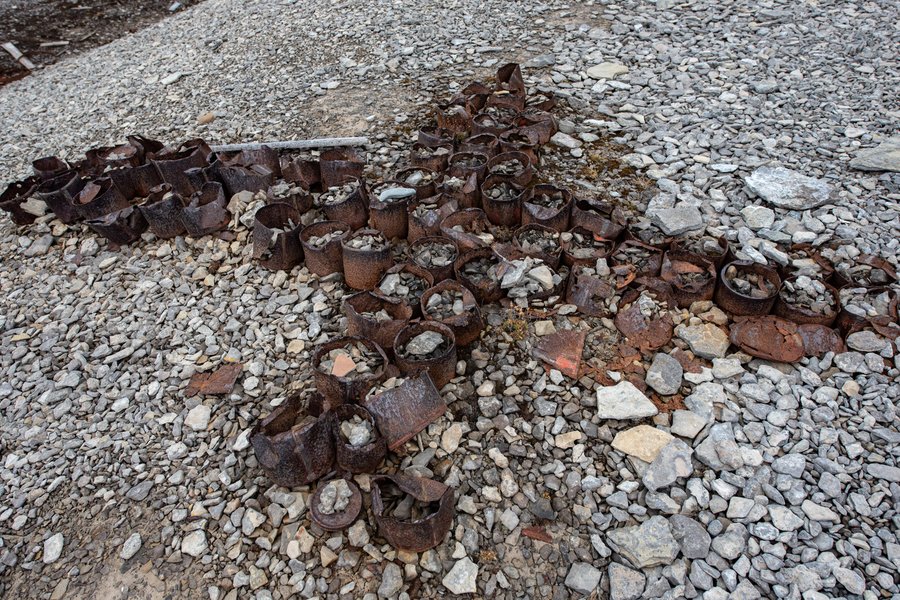
Old Cans in Cross on Beechey Island.
During his nearly two decades with the organization, Griebel says they’ve become much more innovative in thinking about traditional knowledge. “We’re not just seeing this as something documenting what happened in the past, but we’re really trying to see it as a continuum,” he says. “A lot of the work we’ve done is working with elders to talk about things like traditional government models, how communities worked together, how exchange happened, and then we’ll build contemporary businesses out of that model. We’ll think about what an Inuit business would and should look like and then build that business.”
An example is the Inuit-owned social enterprise Griebel is involved with that has no individual owners and is working to support the community by reinvesting funds into community knowledge programs. Its first product is a coffee brand named Kaapittiaq, which means “good coffee” in Inuinnaqtun. Working with Indigenous growers in different parts of the world, they purchase coffee beans, roast them, and package and market them with Inuit art. Initially, they hoped to roast the beans in Nunavut, but flying the product up north and back down south turned out to be impractical and very expensive, so they now work with a roaster in Ontario to prepare the beans.
Griebel is also involved with Kuugalaaq, a new cultural campus in Cambridge Bay (Iqaluktuuttiaq), which had its grand opening in September. Before it was built, the community met many times to focus on creating a facility that meets their needs and is appropriate from cultural, lifestyle, and climate standpoints. The resulting design is energy efficient and incorporates renewable technology.
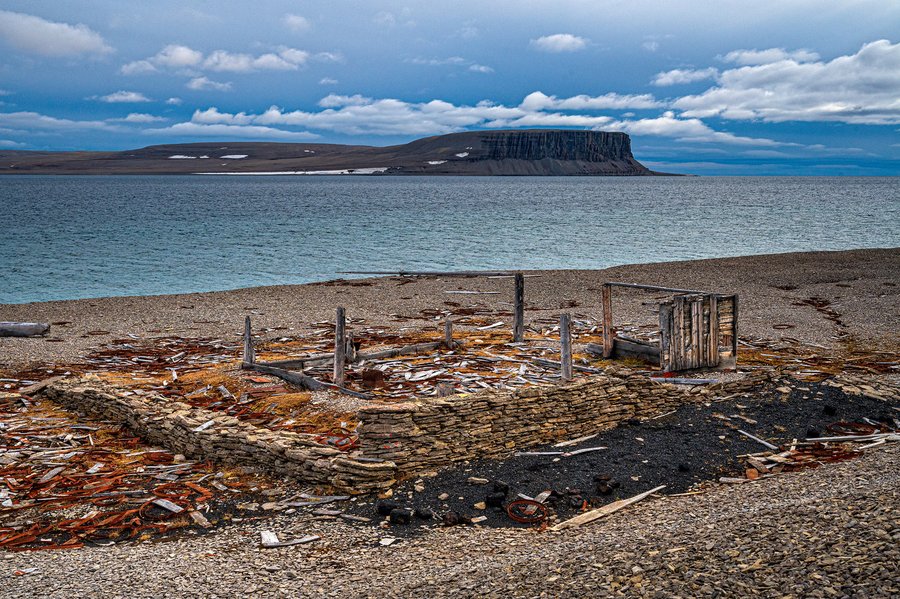
Northumberland House on Beechey Island.
In addition to these Arctic enterprises, Griebel is a co-founder and director of The Museum of Fear and Wonder, which is located in his small Alberta hometown. He and his brother, Jude Griebel, have built their private museum collection for 30 years, focusing on anthropology and art pieces and collecting historical craftwork related to the human body. One exhibit, “Care and Wear: Bodies Crafted for Harm and Healing,” contains everything from life-size hospital dolls from the 1800s, which were used to teach people how to care for humans, to human-focused objects that were more destructive, such as early crash test dummies and bayonet models.
Griebel is currently a National Humanities Center Fellow working on a book and exhibition focusing on items that people incarcerated in Canadian Prairie institutions have created in places like prisons, hospitals, and asylums.
Whether he’s sharing historical artifacts with expedition cruise guests on a windswept Nunavut site, preserving and sharing Inuit cultural archives in Cambridge Bay (Iqaluktuuttiaq), or analyzing objects created by people who were once incarcerated, Griebel’s work shows the importance and meaning of objects. He says they serve as a material testimony showing what people had access to, what they could not obtain, as well as characteristics of their environment.
“Often, these pieces are for people who didn’t have a lot of voice,” he says. “These are one of the few ways we can gain some access into what they were thinking and what was important to them, whether that was 100 years ago in the case of some of these carceral institutions or 2000 years ago in the case of some of these objects we’re seeing in Inuit archaeology. We’re very reliant on the written record in our culture as a form of documentation, and I think when that doesn’t exist, we really have to fall back on these products of human hands to let us know what was important and what skills were present, and what people were thinking about and what was consuming their time.”
Griebel’s book and exhibition are set for release in 2027.
